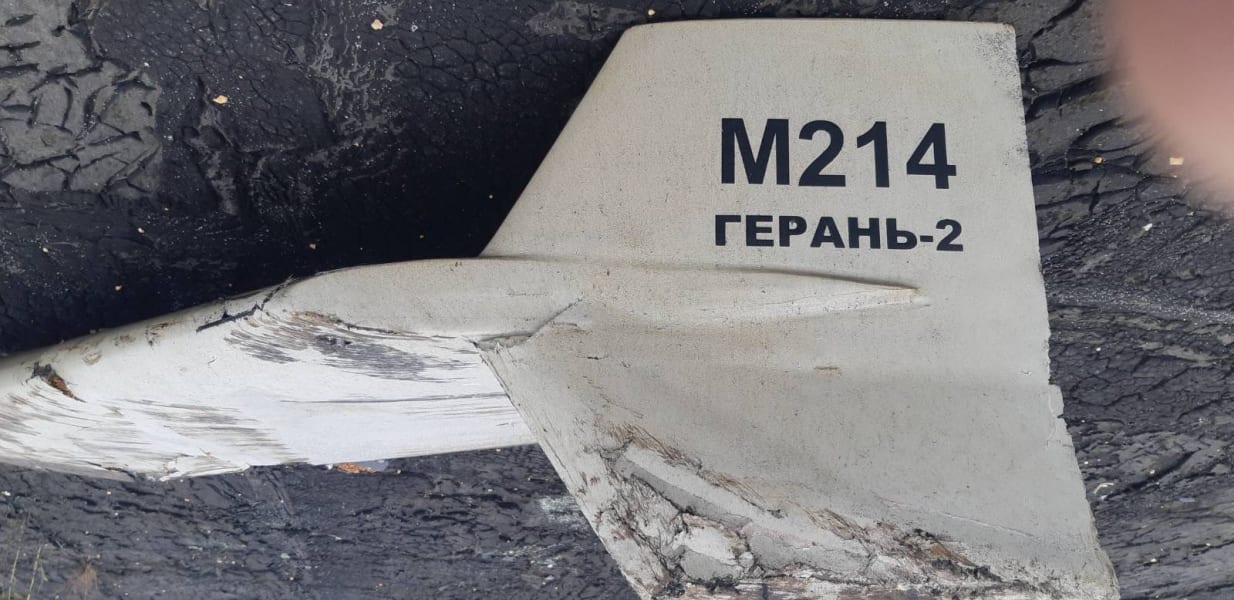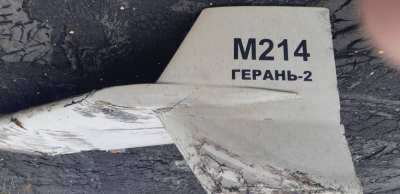Reports emerged over the past few months that Iran had shipped drones to Russia for its war in Ukraine, and we now have photographic evidence that Russia is deploying them. The images, posted on Twitter by a Ukrainian explosive ordnance disposal specialist, show fragments of a Shahed-136 attack drone, a model that has already been used several times in the Middle East by Iran and its proxies.
Last month, open source flight data showed that up to 42 Iranian cargo flights had landed in Moscow since Putin expanded his invasion of Ukraine in February, up from three cargo flights in 2021. According to other press reporting, Iran has sold several kinds of drones to Russia, the Shahed 171, 129, and even the 191. Russia is one of only a few spacefaring nations. It has an aerospace industry that produces high-performance jet fighters and ICBMs. So what is it doing buying drones from a second-rate power like Iran? It has a lot to do with the complexity of modern drones as well as sanctions.
Russia has bought foreign military drones in the past, starting with its purchase of Hermes 450 drones from Israel after facing this drone in battle with the Georgian military in 2008. Russia continues to operate Israeli drones built under license as the “Forepost” system, and some of these Israeli-designed Russian drones have shown up in combat over Ukraine. The Russian arms industry has worked hard to produce its own domestic modern military drones. But the showpiece of Russia’s modern drone production—the ORAN-10 surveillance drone—might be domestically assembled, but the guts are from all over the place. In July a CNN report on the ORAN-10 showed a thermal camera from France, a Japanese engine, and a sophisticated American circuit board that the Ukrainian technician disassembling the drone says is used to track cell phones. Producing a one-off Russian military drone prototype is one thing, mass producing them is another, and based on this ORAN-10 breakdown, Russia needs foreign help for mass drone production.
Every modern drone needs gyroscopes, tilt sensors, electrical motors, microchips, and sophisticated payloads used for surveillance. Russian industry may be able to master making aluminum wings and fuselages for modern drones, but the guts seem to still be heavily dependent on foreign imports.
This is where Iran comes in. Unlike Russia, Iran has been under heavy Western sanctions and various forms of economic and technological pressure for decades.
Iran can’t get Israeli drones, and Israeli and American and other espionage and law enforcement services work hard to make it difficult for Iran to get drone parts. This forced Iran to work harder to get crucial components through smuggling and subterfuge—or actually produce their own or figure out which Chinese components work almost as well as Western ones. Iran has a relatively sophisticated military drone program, despite these constraints.
Dual-use technology components are one way that Iranian drone makers can avoid scrutiny and mass-produce combat drones. The heart of the drone is the engine, and the Iranian Shahed-129 drone uses the Rotax 914 aircraft engine, the same as those used on U.S. Predator drones. The Rotax 914 engine is manufactured in Austria by the BRP-Rotax company, which is in turn owned by the Canadian company Bombardier Recreational Products (BRP).
The Shahed-129 is reportedly one of the drone variants that Russia purchased from Iran, and if these reports are correct then engines produced by a European subsidiary of a Canadian company will take aircraft into battle to kill Ukrainians defending their country. (Canada, by the way, has been a solidly pro-Ukrainian force in this conflict since its start.) Can this supply of engines to Iran and Russia be stemmed or slowed? I asked representatives of BRP-Rotax and some of its distributors for information about how they avoided selling engines to the Iranian military, or information about their total volume of sales of this engine to Iran and Russia. I didn’t get any specific numbers back that I can report or analyze, but according to a PR representative at the Austrian BRP-Rotax company:
“We sell Rotax aircraft engines through an independent, worldwide network of distributors and our engines are exclusively designed and produced for civil purposes and are certified by the applicable civil regulatory authority.”
She went on to write that BRP-Rotax was “made aware that our engines were used for military purposes in the fall of 2020. Since, we have taken all the necessary actions to strengthen our internal controls and to prevent usage of our engines in conflict situations going forward.”
One hopes that if a Russian company approaches BRP-Rotax or one of its distributors with a sudden request for spare parts and new engines it will get turned down, even if the Russians promise that all these engines are only needed for some boom in recreational aircraft use inside Russia. However the Iranians are getting these engines, they have been doing so for a good long while and probably have solid methods of avoiding scrutiny or finding unscrupulous collaborators. These methods take time to establish, time which the Russian military does not have.
What do Iranian leaders think of their drones conducting “devastating” strikes on Ukrainians as the Wall Street Journal reports? This is a delicate question, as the Iranian drone program is already under heavy sanctions pressure and news of Iran helping out Russia would not be helpful on the public diplomacy front during an exceptionally sensitive period for the nuclear talks. The Iranian foreign minister has reportedly denied these drone sales to Russia in a phone conversation with his Ukrainian counterpart, but there is surely some pride in selling weapons to one of its traditional arms suppliers. An Iranian news website run by the former leader of the Iranian Revolutionary Guards Corps (IRGC) Mohsen Rezaee posted a substantial article about the accusation that Russia was getting Iranian drones in mid-August. While proud of how these reports demonstrate the “status and technological and military power of iranian drones,” the article also suggests that these reports are part of “the continuation of the Iranophobia project and the threatening of the Islamic Republic of Iran by the USA.” The article notes that America was constantly trying to combine the drone issue with the nuclear issue and present them as a single threat that also affects parts of Europe. This is a kind of response that Iranian propagandists have in common with Russian ones.
There are implications for the United States. Ukraine and its supporters have repeatedly called for Russia to be designated a state sponsor of terrorism. President Biden has thus far decided against any such declaration, despite Russia’s support for terrorist organizations in Ukraine, despite Russia’s sabotage attacks inside NATO countries, despite Russia’s massive use of terror against the Ukrainian civilian population.
The Shahed-129 drones are manufactured by Qods Aviation Industries of Tehran. This state-owned firm has been sanctioned by the U.N., the U.S., and others as an entity controlled by the IRGC. In 2012 the EU listed this company as linked to Iranian nuclear activities. The U.S. has designated the IRGC as a foreign terrorist organization. The act of purchasing these drones directly from an IRGC-controlled entity might not fit the narrow definition of having “repeatedly provided support for acts of international terrorism” as the U.S. Department of State seems to indicate, but if Russia has purchased military drones from Qods Aviation Industries, it is fair to say that Russia has sponsored a foreign terrorist organization.





Please note that we at The Dispatch hold ourselves, our work, and our commenters to a higher standard than other places on the internet. We welcome comments that foster genuine debate or discussion—including comments critical of us or our work—but responses that include ad hominem attacks on fellow Dispatch members or are intended to stoke fear and anger may be moderated.
With your membership, you only have the ability to comment on The Morning Dispatch articles. Consider upgrading to join the conversation everywhere.